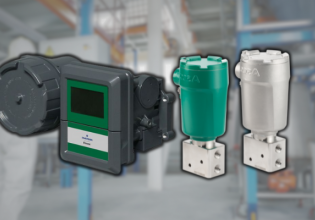Introduction to Micro PLCs
Micro PLCs are quite similar to their larger PLC brethren. What are the major differences, advantages, and disadvantages of micro PLCs?
PLC vs. Micro PLC
A PLC, or programmable logic controller, is essentially a computer that only runs one program and will continuously run that same program over and over again forever, like an infinite loop. These controllers are typically used to control entire assembly lines, large and small machinery—really, most industrial automation uses a PLC of some kind.
A micro PLC is similar to a full-size PLC but usually has a smaller memory capacity and embedded input and outputs (I/O). Over the past few years, PLC manufactures have started developing micro PLCs.
Selecting a Micro PLC
Micro PLCs can do the same automation that the larger family PLCs can—you just need to get the right version for your project. Typical I/O counts should be considered, and motion is often another major driving force for PLC selection. Some systems will only allow variable frequency drive (VFD) connection, and some will allow servo drive connection but with a limited number of axes.
Another important characteristic to consider is how the operators will interface with the machine (i.e., human-machine interface, or HMI, capabilities). Most micro PLCs cannot connect to standard HMIs, but many offer a micro HMI product that will interface.

Figure 1. Siemens LOGO! micro PLC. Image used courtesy of Siemens
For instance, Siemens LOGO! has an HMI designed specifically for it. The programmer can display text and change background colors through the programming environment. The B&R and Beckhoff systems use the HTML5 programming language so that any web browser acts as an HMI.
Once you have selected your micro PLC and HMI based on I/O, motion, and hardware, you need to think about data storage. If you need to store recipes or have numerous retentive variables, memory restrictions will be an issue. Larger machines or automation projects will require large amounts of code; this may be a problem with a micro PLC. Some micro PLCs are taking advantage of USB ports or micro SD ports to store recipe data, but will not store variable data, so read the fine print and know the limitations of your micro PLC.
Micro PLC Company Offerings
For instance, Allen-Bradley has the Micro800 series of micro PLCs. This family of PLCs starts with the Micro810, which is essentially a smart relay, and goes up to the Micro870, which has motion capabilities and lots of room for expansion modules.

Figure 2. The Siemens SIMATIC S7-1200 micro PLC. Image used courtesy of Siemens
Siemens offers the LOGO! and the SIMATIC S7-1200. The LOGO! uses free programming software and can include additional I/O. It can also connect to a cloud-based system. The S7-1200 is in-between a micro PLC and a full-sized PLC and comes in many different variations. It uses the same software as the full-size S7-1500 and has many of the same features, such as remote I/O connection and OPC UA.
B&R and Beckhoff have compact industrial PC versions of a micro PLC. With B&R, the Compact-S family utilizes the Coretex A9 processor but does not come with embedded I/O. Beckhoff has the CX9000 and CX8000 families, which also don’t have embedded I/O, but use the Cortex A8 and A9 processors.

Figure 3. Beckhoff CX9020 micro PLC. Image used courtesy of Beckhoff
Both the B&R and Beckhoff families may not have embedded I/O, but they also do not have the I/O limitations that other micro PLC systems have. These systems are more like industrial PCs with memory and internal specifications.
Virtually any company that manufactures large PLCs also offers a micro version, often at a much lower cost. Sometimes, these micro PLCs use the same software as the larger counterpart and require licensing; sometimes, the software is free to download but has limitations. Most of them come with a limited amount of embedded I/O with the option to add a finite amount of additional I/O, along with a larger memory capacity.
Micro PLC Limitations
Micro PLCs are a great cost-effective solution to automation projects, but they come with limitations. Each manufacturer has different limitations, and some of the constraints are hidden in the manual’s fine print. The Allen-Bradley Micro800 family has Ethernet/IP capabilities, and is advertised as such, but not all Ethernet/IP devices are compliant. For example, the Allen-Bradley Ethernet/IP remote I/O cannot be used with the Micro800 series system.

Figure 4. Beckhoff CX8080, showing Ethernet/IP connections. Image used courtesy of Beckhoff
One of the biggest limitations is the memory size. While the cost of memory has come down considerably over the last 10 years, automation devices still have memory constraints. Most microsystems will not allow for expandable program memory but will allow SD cards, or other removable memory storage, to store recipe parameters.
Limitations can be hard to find but usually prevent using features that the bigger brother PLCs would use.
Micro PLC Advantages
With the many different PLCs on the market today, there is no more need for a one-size-fits-all solution. The micro PLC market uses components that allow for a program scan time just as fast as the bigger family PLCs and has some of the same communication protocols.
No longer do you need to have one massive processor controlling the entire assembly line. You can now have multiple smaller PLCs communicating together, each running a small portion of a large machine. With all these features, and at a reduced cost, the micro PLC market is becoming highly popular. With the ability to connect these micro PLCs over industrial protocols, the topology of control systems in the factory is changing.






